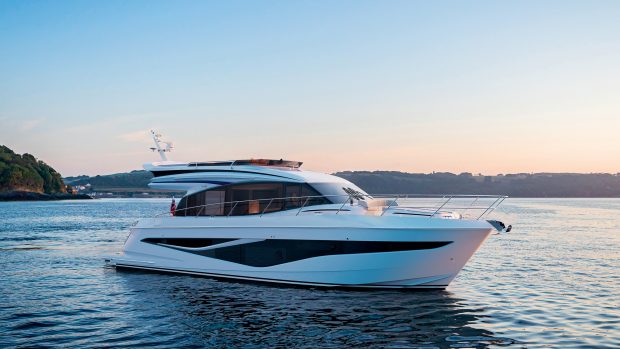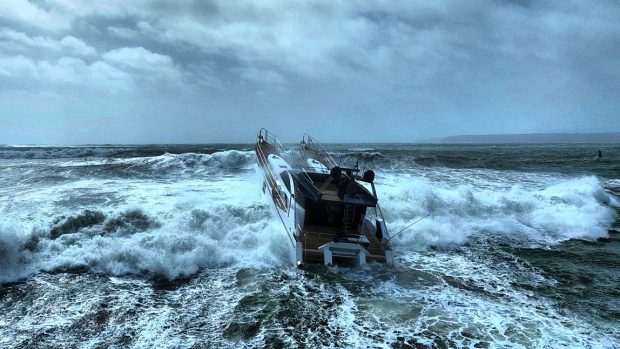Winterise properly and avoid invalidating your policy
With the season drawing to a close owners are likely to be planning where and when they are going to lay up their boats to carry out winter maintenance or for storage on the hard.
Navigators & General have released the following advice on the subject:
It is important not to let cover lapse over the winter period, there are no days of grace in marine insurance and claims arising whilst ashore from a whole host of possibilities, including theft, fire, vandalism, damage by vehicles, storm damage, being blown over, and much more besides are arguably more likely to occur during the darker nights and more exposed winter weather conditions.
If there is a warranty on your policy that your vessel is ashore by a certain date that warranty must be complied with, or you risk invalidating your entire policy. If a lift out date is put back due to weather, tides, or crane problems it is very important to advise your insurers and try and get an extension in cover, remember to plan ahead if your lift out is scheduled for a weekend as most insurers will not be open over weekends.
If a trip by road is required it is important to check that your policy covers road transit, and extend it if required. The Navigators policy automatically includes transit for craft up to 30 feet, but not all other policies will be the same. If the trailer has been left standing it should be thoroughly checked and serviced if necessary, it can be a policy condition that the trailer is kept in a roadworthy condition.
Once ashore it is important to prepare the boat thoroughly. Reducing windage and ensuring cradles are properly secured will protect against gales and removing all valuable equipment and leaving drawers or cupboards open to reduce the temptation to thieves will reduce the risk of break ins. Canopies, dodgers and sails split by the wind is a common exclusion on most policies, so it is advisable to remove them to s safe, dry environment.
If you do take your yacht ashore in an exposed location always try and have the mast taken down, indeed you may find some yards insist this is the case (not normally without good cause). This will provide an excellent opportunity to thoroughly inspect the rig which may pay dividends in the long term.
Particular care should be taken if leaving battery chargers or de humidifiers running over the winter period. There have been a number of devastating fires on boats as a result of electrical faults on shore powered devices. Keeping your boat dry through the winter is the right thing to do, but you need to be sure that any de humidifier being used is well secured, has clean filters and adequate drainage facilities.
Remember that you should still check on the boat periodically, or pay someone to do this for you. If you are ventilating the boat you may just end up heating, or drawing moisture from the atmosphere.
If you plan to have a heater running as well be sure that you are not overloading the circuits, and that you have the right sort of heater as this could significantly increase the risk of fire. Check with your local yard or boat surveyor to make sure. Concerned owners could consider temporarily mounting an automatic fire extinguisher next to such equipment
Winter maintenance is an essential part of boat ownership, and necessary for enjoyable trouble free boating over throughout the season. It also prolongs the life of the boat and helps reduce depreciation. But following a few basic tips can help prevent a worthwhile exercise becoming a potential disaster.
N&G offers the following tips and advice for owners planning to lay their boats up this winter:-
? Remove all expensive equipment such as radios, GPS, navigation and electronic equipment, TV’s, CD players etc and stored in a safe place.
? Remove the outboard, tender and life-raft.
? Leave empty lockers and drawers ajar to ventilate and deter theives
? Drain down water and heating systems.
? Have engines professionally winterised or ensure that you carefully follow all of the manufacturer’s recommendations to avoid frost damage.
? Remove berth cushions to a dry environment.
? Remove furled headsails, mainsails, covers, dodgers and sprayhoods.
? Take out halyards leaving a mouse line and thoroughly wash and check for wear. Use Teflon spray on sheaves.
? Check electrical cable insulation in mast.
? Check all standing rigging for broken strands and rigging screws for wear.
? Ensure the yard use cross bracing if using wooden shores, for extra safety.
? Ensure that whilst ashore the trim of the craft is correct, to allow cockpit drains to be effective, and avoid rainwater building up on decks or within the craft.
? Do not tie covers or tarpaulins to wooden shores or cross bracing.
? Preferably use only close fitting covers, to avoid additional windage.
? Place tie-on labels on the wheel and engine controls to remind you to check all skin fittings, impellers, seacocks and transducers prior to launching/starting the engine.
? Disconnect batteries, and leave them fully charged.
? Do check the craft periodically during the winter months, unless you have made a specific arrangement for this to be done on your behalf. Do not assume that the rental of space will include this service.
Richard Coleman, head of Navigators and General, comments:
“If boat owners follow these simple checks each winter they will reduce the possibility of problems considerably. Out of sight should not be out of mind and winter is the time to take a look at everything on board that you cannot easily get to during the season. A little time spent laying up properly will pay dividends in the long term. It will also mean that when the spring arrives, more time can be spent sailing and less time fixing all those things which could have been done at laying-up time and which have just got worse over the winter.”








